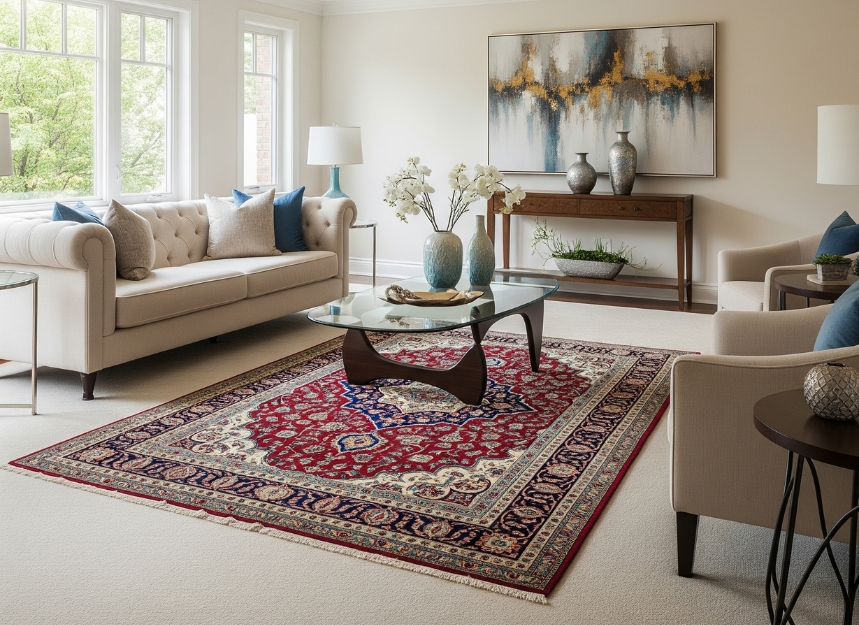A unique way of decoration is layering of rugs, which is one of the most fashionable introductions of depth, warmth and personality to a room. When undertaken successfully, it is able to transform the decor of your house into something magazine-worthy. The handmade carpets, made by weavers with a lot of effort entirely by hand, with their richness and eternity, would be an ideal choice to use in this kind of design, as it provides texture, colour and personality to every layer. Want to know how to layer handmade rugs like a designer and make the best use of your Unique pieces? Rugs and Beyond is here to help you with the same. Let's learn how:
- Start with a Neutral Base: Start with a Larger-sized neutral coloured rug to serve as a background. This may be a handknotted wool rug or flatweave rug made of beige, ivory or light grey. The base or foundation rug should cover the majority of the area of the floor so that the top layers are noticeable without occupying the room space.
- Add a Statement Rug on Top: When you get your base, put on top of it a smaller hand-worn rug that is either bright or has strong designs or patterns on it. This may be a Kashan design, a colourful Oushak pattern or a tribal inspired Afghan carpet. The top rug must be 1-2 feet smaller on all sides so that the base rug is seen.
- Play with Textures: The trick of a designer is the combination of textures to create a luxurious sensation. On a spacious wool base, match up a soft handknotted silk rug, or mix flatweave dhurrie with a pile rug. This is to add colour and contrast in terms of texture and give the room a feeling of cosiness underfoot.
- Mix Patterns with Care: In layering rugs, you can also mix patterns with abandon as long as you utilise the one-busy, one-subtle principle. In case you use bright flowers on the top to make the top rug or geometric patterns, use a simplified bottom rug. Persian or Oriental hand-pieced rugs complement solid or striped bases very well.
- Align or Angle for Style: The majority of individuals use rugs stacked on top of one another, but designers like to stack rugs at an angle. Lay the top rug so it is a bit off centre on the base, creating a casual, eclectic feel. This would do particularly well in bohemian or modern rustic interiors.
- Consider Room Function: Layering rugs is only used in living rooms. A sturdy handmade wool carpet can be used a ground covering in one of the dining rooms and a smaller accent carpet can be used under the center that will be used to create a surprise focus. Layering takes place in bedrooms when the bed is designed with a small piece of loose silk at the foot of the bed over a large rectangle of jute as a base.
- Focus on Colour Harmony: Select compatibility with the colours of your existing decor. Choose one or two colours in your homemade rug and repeat them in furniture items such as cushions, curtains or wall decorations to bring overall continuity.
Why Handmade Rugs Are Perfect for Layering
Handmade rugs come with excellent attention, and are, as such, unique. They are durable enough to be layered and not lose their shape, but with their rich textures and patterns, they make them the right choice to add another level of dimension and to bring about personality into your home.
Last Tip: This all comes down to balancing layers of different rugs - do not be afraid to play and try different combinations, until something feels just perfect. At Rugs and Beyond, you can find handmade high-quality rugs of different sizes, colours, and textures that will add layers to the look, the one which will impress guests and make you feel like your home!

